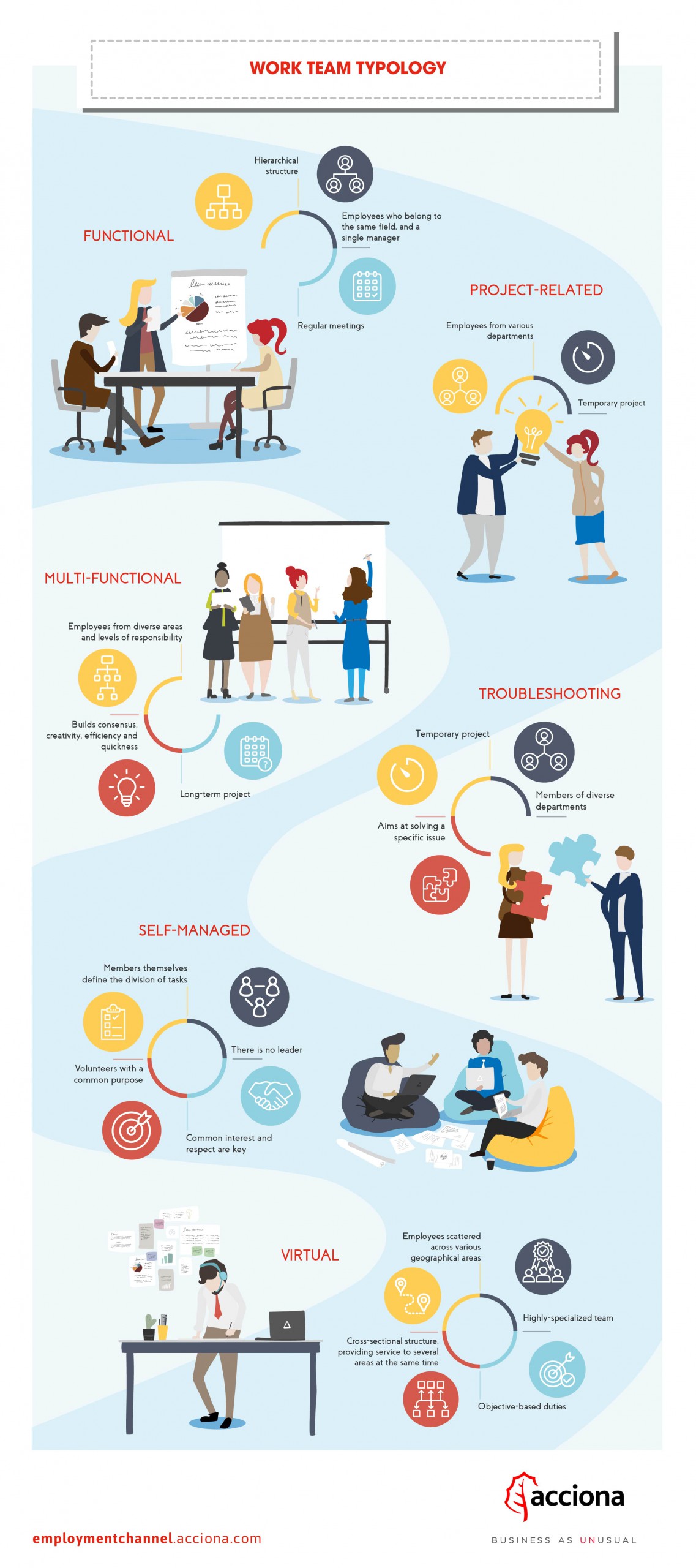In this era of changes within companies, mainly technology-driven, teamworking has also undergone transformations. But before diving into the new way to organize work teams, it’s advisable to recap the pros and cons those changes entail.
On the upside, employees feel more empowered and respected since they can get their ideas and thoughts across more easily. In addition, their sense of belonging is reinforced, thus reducing attrition rates. Likewise, the scope to find tactics and solutions to issues or challenges faced by a company is broadened. In order to accomplish that, communication among team members must be fluid and based on trust.
But there’s also a downside, one that must be addressed so that work itself is not impaired. A study published by Harvard Business Review claims that collaborative work is usually imbalanced, since only between 3 and 5% of professionals provide added value. According to the research conducted on more than 300 companies, said professionals end up being the ones most requested, thus causing the so-called “bottleneck” effect. In other words, without them a certain activity cannot be carried out. That’s why a balance within teams should be sought after so that all members get equally involved whenever a contribution of new ideas and solutions is required.

Work team typology
The most traditional one is the so-called functional work team in which all members belong to the same field and are supervised by the same manager. They work together towards a common purpose, they meet every day or several times a week and the leader is usually the person with the higher rank of authority.
A project work team is comprised of members from different areas of the company, sharing a temporary common goal, who perform tasks that may not be related to their home department. Once their objective is completed, they re-join their section. The challenge in this kind of teams is to choose the right member from each department.
The same structure can be found in an inter-working team, although in this case the goal to be achieved is a long-term one. The purpose behind it is to create a multi-functional endeavour in which each member complements the knowledge of others, bringing better results eventually.
Another type of project work team is the one created for troubleshooting purposes. Members of several departments meet in order to try to find a solution to a certain issue, and once they do they return to their departments, since they’re not the ones in charge of implementing the process.
Self-managed work teams are comprised of volunteers who work together towards a common goal they’re interested in. Their main feature is that they don’t have a leader. Members themselves are the ones who define the division of labour and share responsibility of the actions and decisions taken by the group. Respect and mutual interests usually mean that the members of this type of teams leave their differences aside in order to accomplish their shared goal.
Virtual work teams
The presence of large companies in diverse locations and breakthroughs in technology have promoted the development of virtual work teams in recent years. They’re comprised of employees scattered across various geographical areas who share a common goal. Since there are cross-sectional functions in multinational corporations or company groups, these teams are devised both to provide service to all of them and to be highly specialized in their duties, reducing costs thanks to process standardisation.
Within work teams it’s extremely important to build trust both among colleagues and on managers and to set a disciplinary regime different from the traditional, based mainly on task planning and achievement of objectives.
Sources: Harvard Business Review, Expansión, Chrom.com, EY, Heflo.com